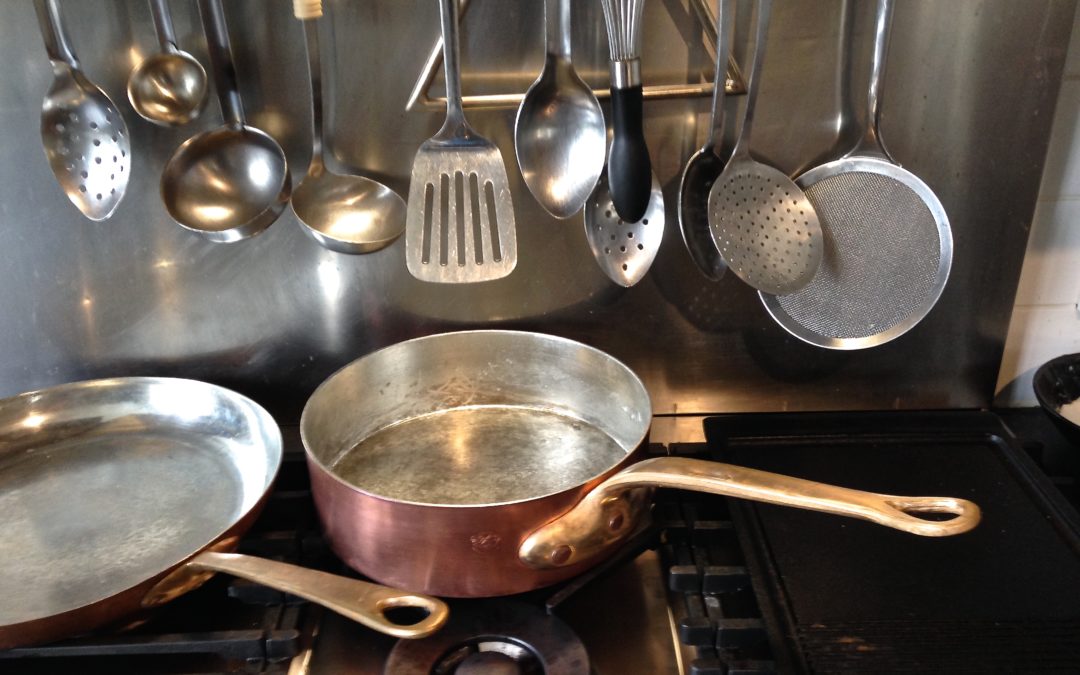“Not in Utopia, subterranean fields,
Or some secreted island, heaven knows where!
But in the very world, which is the world
Of all of us, the place where, in the end,
We find our happiness, or not at all” – William Wordsworth
All the classical cuisines of the world – especially those of France and China – have their roots in home cooking, often disdainfully called peasant cooking
Although I have spent a large part of what is amusingly called my career dining in or working with restaurants, and unaware of any genetic link to peasant stock, I have always preferred to cook at home for my family. Our kitchen is the soul of our home and I always relish facing the oven.
I think that cooking, preparing and providing food, feature among the higher pleasures of my time on this planet. The act of cooking, both calming and reassuring, never fails to adjust my outlook. More stress relieving than yoga, less dangerous than substance abuse. A place in my world that is both sensual and aesthetic, providing and affirming. As the Rev Woodforde notes in his Diary of a Country Parson, ‘…one of the peculiar melodies of existence’.
We presently live in a cottage in a tiny village in north Norfolk, the village houses a couple of hundred souls. Pamment floored, brick walled and pan tiled roof. It is not grand but most of it is old. As in all previous dwellings the kitchen is the mainspring of the household. At one end is a modest preparation area with an unglamorous professional oven. As a counterpoint, the opposing wall houses a wood-burning stove enclosed by a large and once functional inglenook. The stove is dwarfed by a supporting beam and surrounded by a muddle of worn and blackened brickwork. Parts of the cottage walls are 17th century, an era when contemporaneous pointed brickwork demonstrated a finer eye.
“It has been proven that only around a good table do people reconcile and push away the clouds of indifference, dissipated by the sun of good food.” Grimod de La Renière.
At the nucleus of our kitchen is a good table suitably equidistant between oven and stove, the centre warmed by the periphery. It was constructed by a friend and began its original life during our occupation of a spacious Victorian warehouse in London’s Docklands. Then considerably larger, it is now around only two metres by one metre, it has been whittled down and remodelled as metropolitan loft living has given way to rural cottage dwelling. Although our homes and panoramas have changed, the familiar grain of its oak surface still endures.
“I don’t understand how a young couple can begin life by buying a sofa or a television, don’t they know a table comes first?” Fergus Henderson. St John’s Restaurant
When the time arrives for an occasion that interrupts daily duties and the need to concentrate on conversation of others, dining at the kitchen table is inestimable. Much has been undertaken around our shape-shifting table during its forty-year life. Eager children, disparate relatives, fragile grandparents, unbidden guests and assorted friends, have variously occupied its perimeter for breakfast, lunch, and dinner. Many thousands of meals have been served and hundreds of wines tasted. Revolutions too have been plotted here, truces declared, plans hatched and bad jokes tolerated. Beyond any individual around the table, there is always an abiding communion when a meal is shared. Living in a time where people eat burgers on foot and pizza on the run, or petrol station sandwiches in their car, it’s surely time we sat down together again.
“A great meal is only fifty per cent great food and you remember it not so much for what you ate but for the people you were with and the ambience, the atmosphere and the surroundings”. From Roald Dahl’s Cookbook. (1991)
In this kitchen as in others before, it has been a privilege to undertake something I love to do and turn it into something I can share. The collection of recipes that follow, rehearse that abiding delight.

